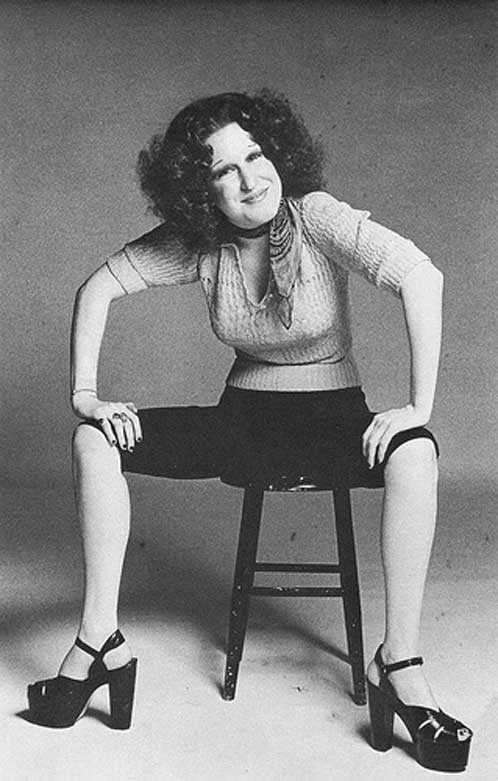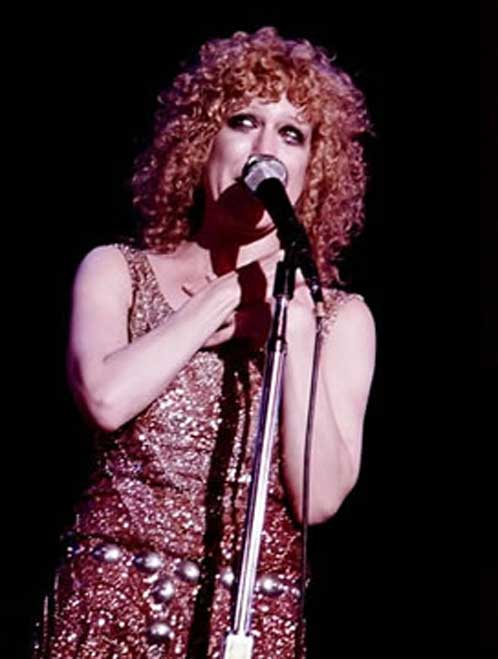Into More
Remembering when Bette Midler played the bathhouse
By Henry Giardina
May 15, 2024

It was the early 70s in New York, and a star was about to be born…and bathed.
Bette Midler had already graced the Broadway stage before she started performing for gay men at New York’s Continental Baths—she’d played Rivka in Fiddler on the Roof from 1969 to 1970—but she hadn’t yet hit the career heights that would mint her as a star of stage and screen tailor-made for the 70s and 80s.
For the moment, she was known as “Bathhouse Betty,” appearing onstage in a towel to serenade gays between hookups.
This was the golden age of gay bathhouses in New York, a time when the city was chock-a-block with places to meet and mingle, sometimes for anonymous sex, other times for a night of casual fun, and the occasional concert. Continental owner Steve Ostrow had started the endeavor as a way to bring class to what he saw as the historically sleazy, run-down institution of the New York bathhouse, and in some ways he succeeded. Having live performances certainly set the Continental apart, and it wasn’t the only thing. While bathhouses proliferated across the country through the 1970s—one spot in San Francisco even offered rooms with slings for harder trade—they weren’t always gay-owned, and they weren’t always friendly to their queer patrons. In 1971, homosexuality was still illegal in New York, and even at a bathhouse gay men were vulnerable to the usual risks of engaging in sexual acts in semi-private spaces.

But the Continental, with its live performances, DJ slots, and a disco room to encourage dancing, was a cut above. And thanks to surviving footage of Miss Diva herself performing at the fabled baths in 1971, we can see just what an exciting space it was.
The joy at the Continental was clearly on tap, as queer men enjoyed a brief but idyllic period of sex, dancing, and hanging out before the 80s rebranded such spaces as dangerous and even deadly.
“You don’t understand what it was like in the 70s,” frequent Continental patron David Wallace told the Guardian in a piece about the institution. “There was no such thing as Aids. If you went to the Baths and there were 20 guys in the steam room, half an hour later you came out and you’d had some sexual contact with at least half of the guys in that steam room. And then after another half an hour, I’d go in the Jacuzzi, then I’d go in the sauna, then the whirlpool … By the time I’d left, I’d have had some sexual contact with 150 different people.”
Not only that, but Midler’s performances helped the Continental attract even more talent, like Barry Manilow, The New York Dolls, and the comedian Andy Kaufman. Soon enough, the space was attracting a star roster of guests from Andy Warhol and Rudolph Nureyev to Alfred Hitchcock and Mick Jagger.

But wherever queerness was, danger still followed: policemen would disguise themselves to arrest gay men inside the space, and the bathhouse was subject to frequent raids. Still, the show went on, as it must.
“Despite the way things turned out [with the AIDS crisis],” Midler told the Houston Voice, “I’m still proud of those days [when I got my start singing at the gay bathhouses]. I feel like I was at the forefront of the gay liberation movement, and I hope I did my part to help it move forward. So, I kind of wear the label of ‘Bathhouse Betty’ with pride.”
As you should, Bette. As you should.






